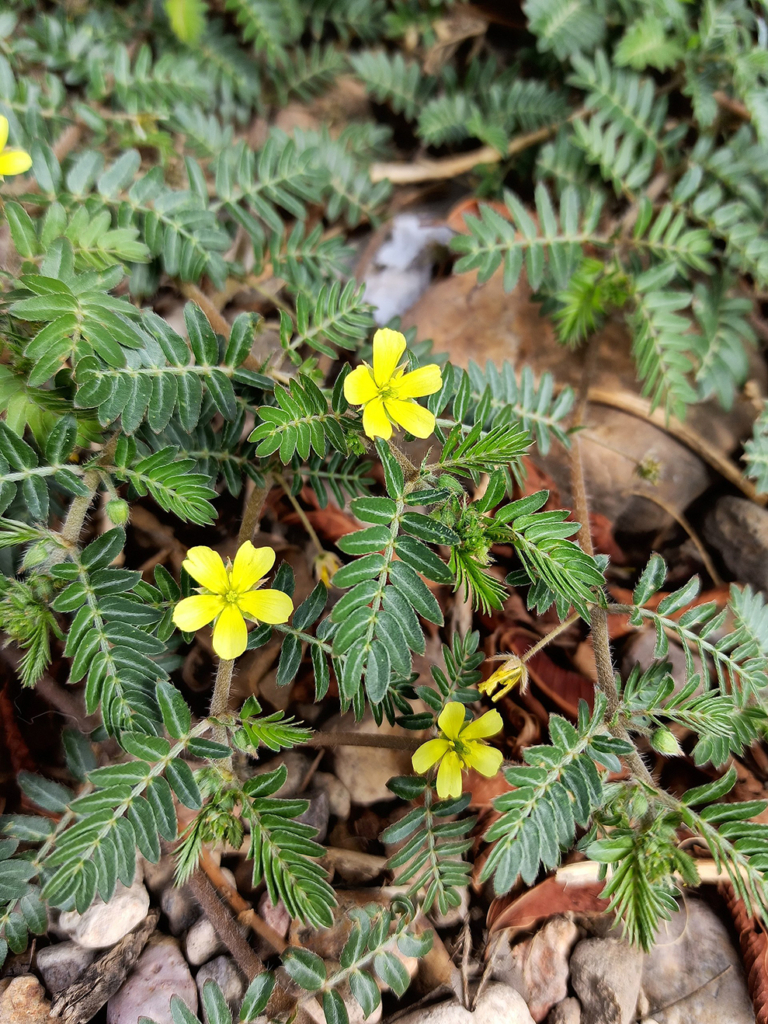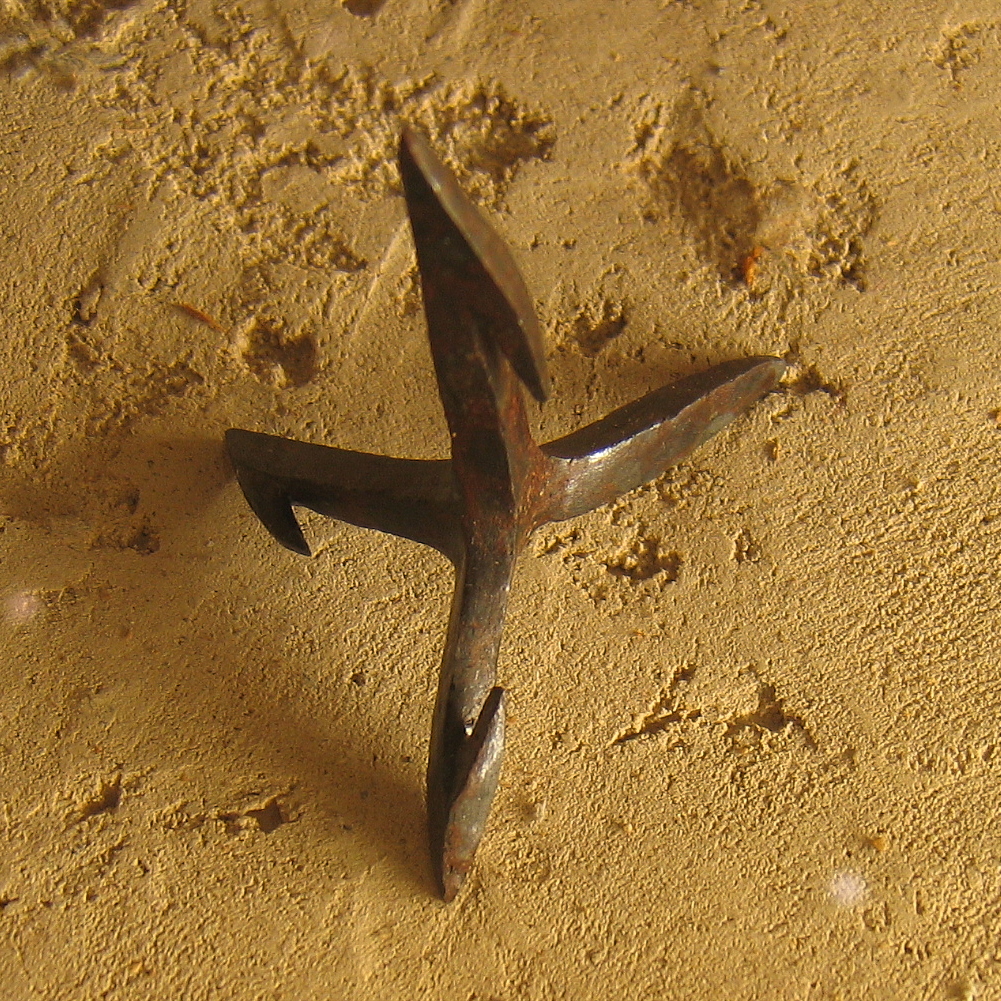Puncturevine – looks can be deceptive!
If you have ever ridden your bike over puncturevine seeds (Croix-de-Malte in French), or even worse, stepped on them with bare feet, you will understand exactly how they got their name!
Don’t be fooled by the pretty yellow flowers which bloom from late spring onwards; their Latin name of Tribulus terrestris, (a tribulation on the earth) also reminds us that looks can be deceptive.
Also called goat’s-head thanks to the resemblance of its burrs to goats’ or bulls’ heads, this annual weed is mostly found on dry or gravelly sites, such as orchards, vineyards, a tree lined path alongside the beach….

It grows in a mat that spreads across the ground, producing these unpleasant and harmful spiked seeds which are dispersed by sticking into tyres, shoes, clothing, fur, feathers and animal feet.
One plant can produce 300 to 5,000 seeds per season. If you do have them ‘chez vous’ wear thick gloves to pull them up, try not to shake seed heads loose and don’t add them to your compost as they will probably survive to skewer you another day!

Its Latin name of tribulus was originally associated with a spiky defence weapon used to slow the advance of troops, horses, chariots, and war elephants, and later used to repel wheeled vehicles by puncturing the tyres.

